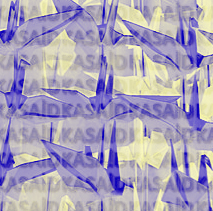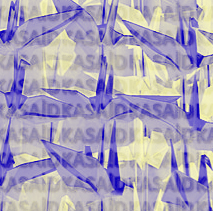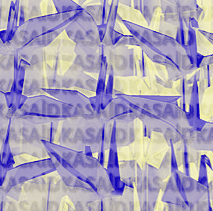In the chart, we see the average consumption (in liters of ethanol) of different beverage types per person in the USA since the mid-nineteenth century. In fact, according to one source quoted in the article, rose, white, and sparkling wines are outpacing red wines. BevAlc Insights also suggests that “sparkling rose wines will experience above average growth in 2022.” While these wines only account for a small share, 2.5% of the wine category, compared to 2020, sparkling rose “was up nearly 50 percent year-over-year in 2021.”
Per capita alcohol consumption of all beverages in the U.S. 1850-2022
For one, regular drinking can turn into a dependency, or what some people describe as functional alcoholism, giving individuals the belief that they’re in control even when they aren’t. At the same time, it’s estimated that less than 10 percent of those with alcoholism receive professional treatment. When we look at national averages in this way, there is no distinct relationship between income and alcohol consumption.
Alcoholic beverage preferences and purchases
Of course, I can’t be representative of every single person in my age bracket. So, I took to asking some peers — all of whom are in their 20s and 30s, and all of whose names I’ve changed — about theiraverage weekly spend on alcohol. Keep in mind almost all of these people live in urban areas, so it’s still not a completely accurate snapshot (though really, what is?), but I think their answers provide some interesting insight into how we approach this particular area of spending. Drinking is more common among younger than older adults, but this is evident only when the analysis is limited to those of legal drinking age.
As shown by clusters of countries (for example, Middle Eastern countries with low alcohol intake but high GDP per capita), we tend to see strong cultural patterns that tend to alter the standard income-consumption relationship we may expect. With the change country feature, it is possible to view the same data for other countries. Sweden, for example, increased the share of wine consumption and, therefore, reduced the share of spirits. By default, the data for France is shown – in recent decades, here, the share of beer consumption increased to make up around a fifth of alcohol consumption in France. Most adults who consume alcohol have done so recently, according to the July Gallup survey.
- Additionally, expect to see whiskey from Japan, Korea, Taiwan, and other up-and-coming producing countries such as Italy, Wales, Netherlands, and Singapore enter or become more prominent in the U.S. market.
- For wine, a greater percentage of those who were female (44%), college graduates (39%), and those with an annual household income of $100,000 or more (35%) selected the beverage compared to their counterparts.
- From another report, compared to the first half of 2021, the volume of premium-and-above Prosecco grew 8% in the first half of 2022.
- It bottomed out in the late 1990s at 2.45 gallons per person, or about 523 drinks.
- Between 2022 and 2026, the no-alcohol category is expected to increase in volume by 25%, while the low-alcohol category will increase by 6%.
Surveillance Report #120
Among the nation’s largest racial and ethnic groups, White adults aged 18 and older (68%) are more likely than Hispanic adults (59%) or Black adults (50%) to report they drink. A review of Gallup’s longer-term data confirm that White adults have been consistently more likely than Hispanic and Black adults to drink, while the rate among the last two groups has been statistically similar. It’s difficult to keep a running total of how much you spend on each alcoholic drink, particularly because prices vary dramatically. After all, the wine you purchase at a local store and consume at home likely has a radically different price tag than the same bottle you purchased at a fine-dining restaurant. Do you know how much money you’re spending on alcohol each week, month, or year?
However, state-level consumption estimates can be affected by such factors as sales to people from neighboring states (especially when there are significant differences in alcohol tax rates) and alcohol consumption by tourists (think Nevada, Florida, and Washington, D.C.). Americans drink less beer and more wine than they used to, according to the NIAAA. Since 1970, the peak year for beer consumption was 1981, when the typical American age 21 or older drank 36.7 gallons. Over those four decades, the amount of wine the average American drank annually rose from 3.2 gallons to 3.8 gallons. Meanwhile, consumption of distilled spirits dropped slightly, from 3.0 to 2.8 gallons.
Granted, if you’re an avid wine drinker, you might drink more than 5 ounces per glass, have more than one glass some days of the week, and drink pricier wine when you go out to eat. Let’s say you stay within the recommendations of the Dietary Guidelines for Americans, which means one daily drink for women and two for men. Your drink of choice is a 5-ounce glass of wine, and you consume your allotted serving every day. In our scenario, you’re purchasing 25-ounce bottles of wine from the local liquor store at $20 per bottle, so each 5-ounce glass is $4. This pattern of drinking is often termed ‘binging,’ where individuals consume large amounts of alcohol within a single session versus small quantities more frequently. Discover the impact alcohol has on children living with a parent or caregiver with alcohol use disorder.
Those that spend sfbt worksheets the least — Birmingham, AL, New Orleans, LA, and Memphis, TN — each spend $57,000 or more. The results in the chart show the increased risk of developing alcohol dependency (we show results for illicit drug dependency in our topic page on drug use) for someone with a given mental health disorder (relative to those without). For example, a value of 3.6 for bipolar disorder indicates that illicit drug dependency became more than three times more likely in individuals with bipolar disorder than those without. The risk of an alcohol use disorder is highest in individuals with intermittent explosive disorder, dysthymia, ODD, bipolar disorder, and social phobia.
You may wonder, “How much is a premium-and-above bottle of wine or spirits?” The following table provides price bands as published by IWSR, Forbes.com, Winefolly.com, and IRI. While Americans’ cigarette use is in steep decline, future changes in their use of marijuana and alcohol are uncertain. The cigarette smoking rate among young adults in the U.S. has fallen by more than 20 points in the past two decades. Young adults are now more likely to smoke marijuana or electronic cigarettes than tobacco cigarettes. In addition to sampling error, question wording and practical difficulties in conducting surveys can introduce error or bias into the findings of public opinion polls. When not diving into the world of merry-making, he puts his digital nomad lifestyle to work travel-writing about hidden culinary gems in Canada for National Geographic and about the happiest place on earth for Inside Hook.
Survey data comes from Gallup and the University of Michigan’s Monitoring the Future Survey. Data on Americans’ drinking habits comes from the National Institute on Alcoholism and Alcohol Abuse (NIAAA), and alcohol sales data is from the U.S. As reported in the 2022 Silicon Valley Bank State of the Wine Industry report, data provided by SipSource, which “tracks both on- and off-premise sales by volume,” for the period of September 2020 through September 2021, approximately 55% of wine was sold in 750 mL bottles. This was a 3.6% decrease in the growth rate over the previous 12-month period. In 2023, vodka accounted for 27% of total spirits volume, and flavored vodkas accounted for 21% of all vodkas sold. Consumers are looking for a beverage made with natural ingredients and coloring for the overall beverage category.
The year saw a reversal in the volume declines from previous years seen in the wine category. While imported wines grew +2.5%, the tariffs placed upon certain EU states by the Trump administration saw growth from markets not affected by them. One area of interest was low-alcohol wines which doubled their volumes in 2020, with many major brands entering the category. Many of the risk factors for alcohol dependency are similar to those of overall drug use disorders (including illicit drug disorders). Further discussion on these risk factors can be found on our topic page on drug use. The charts show global consumption of spirits, which are distilled alcoholic drinks, including gin, rum, whisky, tequila, and vodka.



